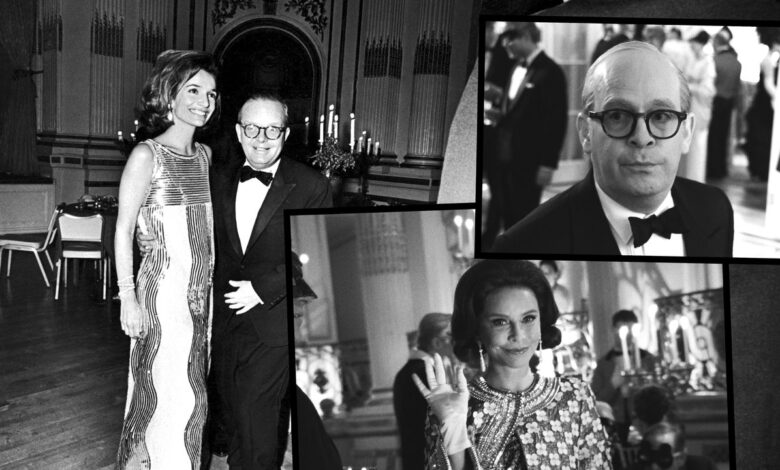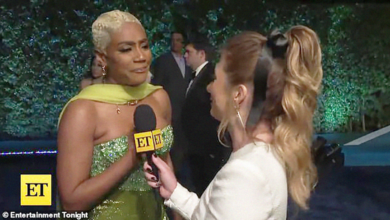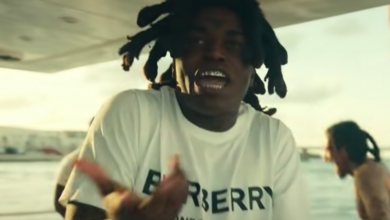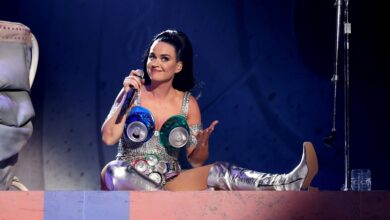Zac Posen on Designing the Full Menagerie of Feud’s Black and White Ball

On a crisp November night in 1966, the would-be prince of New York City threw a ball that even Cinderella would have had trouble getting into. The prince was Truman Capote, and the party was his Black and White Ball, honoring the Washington Post’s publisher, Katharine Graham. Around 540 handpicked guests turned up to the Plaza Hotel for what Capote would describe as “a little masked ball” featuring New York’s finest, from Lauren Bacall to Norman Mailer to, of course, his beloved swans. Capote’s Black and White Ball wasn’t just the event of the season—it was the society event of the ’60s.
Naturally, FX’s Feud: Capote vs. the Swans devotes an entire episode to the event—from its meticulous planning to the night of the picture-perfect party. To bring the Black and White Ball to life, executive producer Ryan Murphy and director Gus Van Sant enlisted famed fashion designer Zac Posen. “Gus is a good friend, and Ryan is a friend and somebody I’ve known for a long time. We’ve wanted to work together for a long time,” Posen says. When the team asked the designer if he might want to fabricate the episode’s elaborate gowns, they were in luck: “I don’t have my own line anymore,” he says. “So I only do one-of-a-kind pieces.” (Days after our interview, Posen would be named the executive vice president, creative director of Gap, and the chief creative officer of Old Navy.)
Running a major fashion label is not the same thing as costuming a major television show. “Costume design is a different consideration—more character building,” he says. “It’s also elevated. Not only is it costume design of a time period, it’s costume design within the wonderful world of Ryan Murphy, aesthetically set between Ryan and his collaborator [Feud costume designer] Lou [Eyrich], of a world that they’ve created through the lens of Gus Van Sant. So you kind of find your place within that.”
But Posen didn’t feel obligated to hew entirely to the historical record. In fact, Murphy specifically told him not to. Still, he did his homework. “I was finding historical matches of fabrics, of color sources, deadstock flowers from one of the oldest silk flower places in New York of that time period,” Posen says. He worked closely with Deborah Davis, author of Party of the Century: The Fabulous Story of Truman Capote and His Black and White Ball. Then Posen combined his research with his own creative vision. The result? A true feast for the eyes.
Every dress, Posen says, “is a character—a different, beautiful, aquatic bird on a pond.” Posen was inspired by the period’s magical surrealist filmmakers like Federico Fellini, as well as Franco Zeffirelli, British photographer Cecil Beaton, director Vincente Minnelli, and even Muppets creators Jim Henson and Frank Oz. “I was like, Let’s look at the people that I think are great imagineers in filmmaking, that are a really big part of my DNA,” says Posen. “How do we create that kind of magic [when] it’s going to be in a piece that takes place around historical characters, but is not a retelling of history?”
All the research in the world wouldn’t have made a perfect recreation of the ball possible. “Slim [Keith]—you can’t find documentation of what she wore,” says Posen. There were “no drawings or written descriptions that I could find, or any of the historians could find.” In other cases, there was too much history to pore through. “Lee Radziwill had the time of her life that night,” he says. “There’s a million Slim Aarons photos to Ron Galella photos and drawings [of her]. It’s all there, documented.”
There were practical matters to contend with as well. Directed by Van Sant, the episode “Masquerade 1966” was conceived as a movie within a show, shot mostly in black and white from the perspective of the Maysles brothers—the documentarians behind Grey Gardens, who were working on a documentary about Capote around this time. According to Posen, it was decided only partway through the process to shoot the episode almost entirely in black and white. Naturally, this had an effect on how Posen chose to costume certain swans.
Take Radziwill (Calista Flockhart), for instance. In real life, the socialite wore an embroidered Mila Schön dress to the ball, but Posen didn’t have time to embroider a dress. “I got the briefing right before Thanksgiving, and we shot in the beginning of the second week of January,” he says. “It was quick.” Flockhart was initially in a white jacquard cloque coat, which Posen says looked great on her, but it was “just going to disappear” on camera. So he pivoted: “Let’s use a metallic jacquard, let’s do an overlay of something graphic with these embroidered daisies, then trim it with something that looked kind of [like] futurism.”




